Male Breast Augmentation in Bangkok
Search and Compare the Best Clinics and Doctors at the Lowest Prices for Male Breast Augmentation in Bangkok
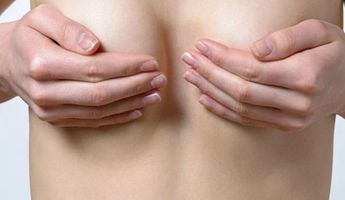
Find the best clinics for Male Breast Augmentation in Bangkok
With Medijump you can browse 7 facilities offering Male Breast Augmentation procedures in Bangkok. The cheapest price available is $1,667 in Udon Thani
Male Breast Augmentation in Thailand
Price: $ 1,667
Male Breast Augmentation in Udon Thani
Price: $ 1,667
Male Breast Augmentation in Bangkok
Price: $ 4,168
Turkey offers the best prices Worldwide
Price: $ 2
From 5 verified reviews
Athena, 01 August 2024
I had my breast augmentation at DBN Infertility Clinic and couldn't be happier with the results. The staff was incredibly supportive throughout the entire process.
From 2 verified reviews
See Hoe, 06 March 2024
I could not be happier than this, I had a liposuction here and was very impressed with the results and their team. The doctor is very skilled and open. They are amazing!
From 2 verified reviews
Erica Beard, 05 March 2024
I highly recommend Wansiri Hospital. The staff are friendly and professional, and the facility is state-of-the-art. The surgeons are exceptionally skilled. I had an eyelid procedure and am very impressed with the results.
From 2 verified reviews
Chan Tong, 15 December 2023
Getting a rhinoplasty here was a great decision. The entire team was professional and caring, ensuring I was informed and at ease from start to finish. The results exceeded my expectations, and I feel more confident than ever.
From 2 verified reviews
Xiuling Neng, 22 November 2023
Dr. Louise and the staff are amazing. I highly recommend them for breast augmentation.
From 2 verified reviews
Nicole Potts, 07 April 2024
I couldn't be happier with the exceptional care I received. The team took the time to explain the procedure in detail and made sure I understood all the post-op instructions. The clinic is conveniently located and boasts a beautiful, spotless environment. Highly recommend!
From 95 verified reviews
Yuchen Wang, 11 January 2023
I recently had my varicose vein treatment at Rattinan Clinic and I'm extremely pleased with the results. The staff was friendly and knowledgeable, and the location was conveniently close to my home. The procedure was quick and painless, and I'm already seeing results. Highly recommend!
From 13 verified reviews
Vannchi Jonathan, 07 January 2020
Great Doctor and staffs
Compare Before & After Photos of _procedure_photos.phpMale Breast Augmentation
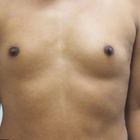
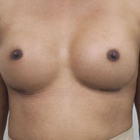
Front view
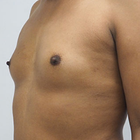
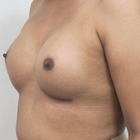
Front view


Front view
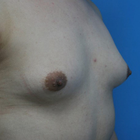
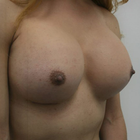
Half-side view
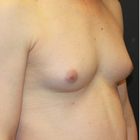
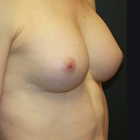
Half-side view
WHY US?
At Medijump, we're making medical easy. You can search, compare, discuss, and book your medical all in one place. We open the door to the best medical providers worldwide, saving you time and energy along the way, and it's all for FREE, no hidden fees, and no price markups guaranteed. So what are you waiting for?

Free

Best Price

Widest Selection

Risk-Free
What you need to know about Male Breast Augmentation in Bangkok
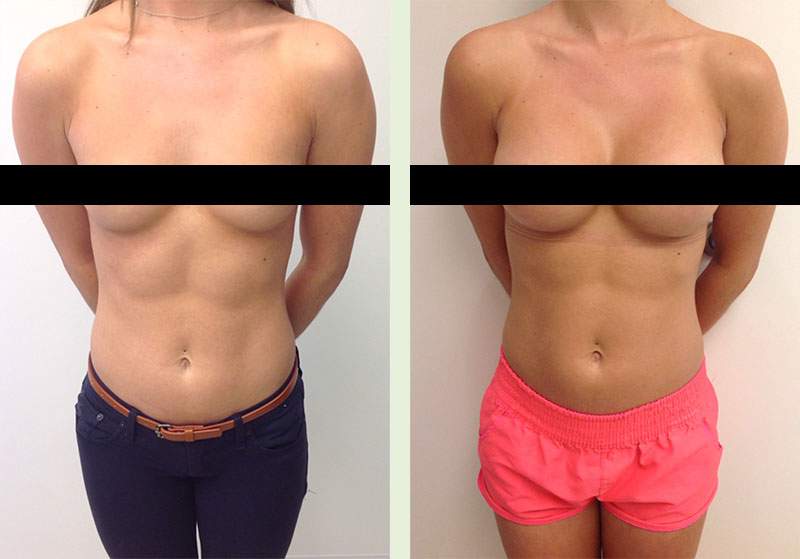
Male breast augmentation is a cosmetic procedure to enlarge the male’s breasts by inserting a breast implant. It is usually done on a male to female surgery to give patients contoured feminine breasts.
The procedure is also done to enhance the pectoral muscles on men whose chests do not seem to respond to exercise or men with Poland’s syndrome. The intervention is often preferred by individuals who wish for a chest that looks more chiseled and symbolizes masculinity. The usual method entails placing implants beneath the pectoral muscles.
What is the cost of Male Breast Augmentation in Bangkok?
The expense associated with Male Breast Augmentation within Bangkok fluctuates based on several variables such as the surgeon's level of skill, the intricacy of the operation, the kind of implants employed, and the physical location of the clinic. Therefore, it’s essential to converse in-depth with your medical provider to comprehensively comprehend the total expenditure related to the procedure.
Insurance plans generally don't cover Male Breast Augmentation; however, some medical facilities provide patient-friendly finance choices. It's vital to assess the pros and cons in correlation with your personal financial health strategies and determine how it aligns with your budget. Investing in your self-perception and physical appearance can potentially provide invaluable long-term benefits.
What Does the Procedure Involve?
Male breast augmentation is carried out under general anesthetic. Your surgeon starts by making an incision in an inconspicuous area, usually under the breast along the natural skin fold, to make sure the scar is unnoticeable. Then, they place the implant either under the chest muscles or behind the breast tissue. The implants can be made from silicone gel or saline, and the size is adjusted based on your preferences.
How Long Should I Stay in Bangkok for a Male Breast Augmentation Procedure?
The length of your stay in Bangkok after a Male Breast Augmentation is subject to certain variables. Generally, individuals are cautioned to remain in the vicinity for around a week or two following the surgery. This time frame accommodates the preliminary healing stage and facilitates the management of any immediate complications post-procedure.
In this time, your doctor will keep track of your recuperation process via planned follow-up visits. These check-ups serve as a vehicle to monitor the healing process, extract stitches, and check for any signs of infection or inherited issues. Adherence to this schedule of revisits is of utmost importance.
However, it is crucial to remember that everyone's healing experience is individual. Aspects such as age, overall physical wellness, and the degree of observance to the instructions given after the procedure can sway your recovery. Some people might necessitate an extended stay in Bangkok, particularly if they encounter any complications or if their recovery pace is slower than anticipated. Therefore, it's imperative to have a conversation about this with your surgeon, who can furnish a more precise timeline based on your particular circumstance, promoting a secure and effective recuperation.
What's the Recovery Time for Male Breast Augmentation Procedures in Bangkok?
You may feel uncomfortable for the first few days and your doctor will give you pain medication to manage the discomfort, so you may need to rest as much as possible during this period. The recovery period until you can go back to your normal routine (including intense exercise) may take about 4 to 6 weeks, but you should be able to return to work within 1 or 2 weeks.
Following the operation, it's fairly common for patients to feel some discomfort, along with swelling and bruising. These are standard postoperative signs that will slowly fade with time. Medical practitioners commonly prescribe pharmaceutical drugs to manage pain and to reduce bruising during this timeframe. Regular doctor visits for postoperative reviews are suggested to keep track of the healing process and promptly deal with any arising complications.
Furthermore, it's advised to avoid demanding activities such as heavy weight lifting and intense exercises for a minimum of four to six weeks after the treatment. This precaution ensures optimal healing of the chest area and minimizes the probability of post-surgical complications. Always remember, healing requires time and patience. Although resuming daily activities is important, giving your body the required time to fully recuperate from the operation is equally crucial.
What sort of Aftercare is Required for Male Breast Augmentation Procedures in Bangkok?
It is important to follow your surgeon’s post-operative instruction to avoid any complications and to make sure that the wounds will heal properly. Your surgeon’s instruction may include restrictions, diet, exercise, and wound care. Since some implants need to be replaced after about 10 years, make sure you attend regular checkups with your local doctor.
Keeping regular check-ins with your medical professional is essential to keep track of your recovery journey, modify your post-treatment care if required, and tackle any arising issues swiftly. The post-treatment regimen also consists of particular instructions related to physical movement and workout. Mild physical exercise might be recommended for better blood flow, but demanding activity or chest-focused exercises are generally not permitted for a specific amount of time.
What's the Success Rate of Male Breast Augmentation Procedures in Bangkok?
In general, the success rate of male breast augmentation is similar to female breast augmentation, which is around 90% to 98%. This is notably high.
The advancements in medical surgery technology, coupled with the proficiency of the medical experts, generally result in a noticeable enhancement in the physical aesthetics and self-assurance of the majority of males who opt for this procedure. Furthermore, due to the refined chest shape and muscle outline achieved, patients have reported a significant level of satisfaction.
However, akin to other medical interventions, the effectiveness of a Male Breast Augmentation is largely influenced by personal variables. These could comprise the overall wellbeing of the patient, the way their body reacts to the surgery, the surgeon's skill, and compliance with guidelines for care post-surgery.
Are there Alternatives to Male Breast Augmentation Procedures in Bangkok?
Surely, other choices exist for Male Breast Augmentation techniques in Bangkok. One such approach entails embarking on natural chest enhancement. This involves a regimen of chest workouts and a nutritional program aimed at boosting the bulk and power of the pectoral muscles. Though this pathway may be more time-consuming, it could provide a gradual, naturally appearing augmentation in chest size without the price tag and potential hazards tied to surgery.
Hormonal therapies present another viable alternative, particularly for transgender men. These therapies seek to encourage the formation of male secondary sexual traits, such as an uptick in muscle mass, body hair, and a more profound voice. However, it's crucial to consult a medical practitioner before beginning these therapies due to the potential side effects.
Lastly, some men might select a non-surgical technique like the injection of fillers or fat transfer to enhance the contour and fullness of the chest. However, these procedures yield temporary outcomes and may necessitate repeat procedures. It is advisable to consult with your surgeon about these alternatives.
What Should You Expect Before and After the Procedure
Before undergoing the Male Breast Augmentation, your healthcare professional will assess your medical history, carry out physical assessments, and converse about your cosmetic objectives to evaluate if you're fit for the procedure. Various diagnostic examinations may be necessary to ascertain your general health condition. Your surgical specialist will provide information about the impending procedure, discuss anticipated risks, and outline the probable result. Those who smoke will receive advice to stop several weeks prior to the procedure as nicotine may obstruct the healing process. Additionally, you might be instructed to adhere to specific dietary guidelines and discontinue certain medications.
Soon after the Male Breast Augmentation, it's common to experience some discomfort, inflammation, and bruising in the chest region. This usually decreases steadily over time. Over-the-counter drugs can be used to alleviate the discomfort. Typically, the use of a supportive compression garment is suggested to reduce swelling and aid the new chest shape during the recovery phase.
What are the Potential Risks of Male Breast Augmentation?
Although most patients are happy with the outcome of the surgery, it is important to be well-informed about the side effects and risks before you decide to have it, which are:
- Bleeding and infection
- Seroma
- Hematoma
- Asymmetry and dissatisfaction
- Implant shifting or displacement
- Numbness of the upper arm
- Unfavorable scarring
- Allergic reaction to the anesthesia.
Whilst the information presented here has been accurately sourced and verified by a medical professional for its accuracy, it is still advised to consult with your doctor before pursuing a medical treatment at one of the listed medical providers
No Time?
Tell us what you're looking for and we'll reachout to the top clinics all at once
Enquire Now

Popular Procedures in Bangkok
Price on Request

Prices Start From $692

Prices Start From $556

Prices Start From $2,473

Recommended Medical Centers in Bangkok for Male Breast Augmentation

- Interpreter services
- Translation service
- Religious facilities
- Medical records transfer
- Medical travel insurance
- Health insurance coordination
- TV in the room
- Safe in the room
- Phone in the room
- Private rooms for patients available

- Interpreter services
- Translation service
- Religious facilities
- Medical records transfer
- Medical travel insurance
- Health insurance coordination
- TV in the room
- Safe in the room
- Phone in the room
- Private rooms for patients available

- Interpreter services
- Translation service
- Religious facilities
- Medical records transfer
- Medical travel insurance
- Health insurance coordination
- TV in the room
- Safe in the room
- Phone in the room
- Private rooms for patients available

- Interpreter services
- Translation service
- Religious facilities
- Medical records transfer
- Medical travel insurance
- Health insurance coordination
- TV in the room
- Safe in the room
- Phone in the room
- Private rooms for patients available

- Interpreter services
- Translation service
- Religious facilities
- Medical records transfer
- Medical travel insurance
- Health insurance coordination
- TV in the room
- Safe in the room
- Phone in the room
- Private rooms for patients available

- Interpreter services
- Translation service
- Religious facilities
- Medical records transfer
- Medical travel insurance
- Health insurance coordination
- TV in the room
- Safe in the room
- Phone in the room
- Private rooms for patients available

- Interpreter services
- Translation service
- Religious facilities
- Medical records transfer
- Medical travel insurance
- Health insurance coordination
- TV in the room
- Safe in the room
- Phone in the room
- Private rooms for patients available

- Interpreter services
- Translation service
- Religious facilities
- Medical records transfer
- Medical travel insurance
- Health insurance coordination
- TV in the room
- Safe in the room
- Phone in the room
- Private rooms for patients available

- Interpreter services
- Translation service
- Religious facilities
- Medical records transfer
- Medical travel insurance
- Health insurance coordination
- TV in the room
- Safe in the room
- Phone in the room
- Private rooms for patients available

- Interpreter services
- Translation service
- Religious facilities
- Medical records transfer
- Medical travel insurance
- Health insurance coordination
- TV in the room
- Safe in the room
- Phone in the room
- Private rooms for patients available
Male Breast Augmentation in and around Bangkok
About Bangkok
Bangkok is the Capital city of Thailand and is ranked as one of the world’s most popular holiday destinations. The city holds a magical spell over its visitors and is full of beautifully decorated Buddhist temples, Royal palaces, museums, restaurants, and nightlife. Recently, the city has become the gateway to a large number of medical tourists. According to a BBC report, more than 80% of all medical tourists travel to Thailand, aiming to get the best medical attention, of which Bangkok and Singapore remain the most popular destinations for expats. The trend is increasing by 10% to 15% per year and has been a strong economic driver for the country, next to the tourism industry.
Medical tourism in Bangkok is highly rated within the industry for many reasons, including:
Cost-Efficient Treatments
Experienced Medical Professionals
Top-Tier Facilities
Advanced Technology
Quality Dental Care: Short Waiting Times
Comfortable Recovery:
Popular areas in Bangkok
For starters, Bangkok is a well-developed city. There are plenty of places to stay; shop and explore and deciding where you want to stay can be a difficult decision.
One way to choose the place you will likely stay is to prioritize your activities. For example, if you want to shop then Sukhumvit may be the right district. This 18-kilometer long road is the commercial center and some of the best shopping malls and retail markets are dotted along this road.
The Siam district would be a great place to stay as the more popular and trendy shopping centers can be found here with a great selection of restaurants. There are various other attractions too, the Siam Ocean World, Kidzania, Erawan Shrine, Madame Tussauds, and the BACC, Bangkok's biggest art gallery, and cultural center.
Other popular tourist locations are Sukhumvit, Pratunam, Silom, Chinatown, Khaosan and the famous Bangkok Riverside.
Weather and climate in Bangkok
Bangkok endures a tropical monsoon climate, it is hot and humid for the vast majority of the year with temperatures reaching thirty degrees centigrade. The best weather for visiting tourists in Bangkok is experienced between December and February as the temperature is much cooler and
There are three seasons in Bangkok –
-
The hot season that stretches from March to June
-
The Monsoon or the rainy season, which starts in July and lasts until October
-
The cool season is generally late November and ends late February.
Getting around in Bangkok
There are two airports that serve Bangkok. All the international flights land at Suvarnabhumi International Airport and almost all of the domestic carriers, operate from Don Mueang Airport.
It takes sixty minutes to travel between the two airports and you must check with the airlines which airport your carrier is operating out of. You must also remember to check in for your flight at least two hours in advance to avoid the last minute rush.
Within the city, sky-trains and the underground MRT trains are the best ways to avoid heavy traffic. Taxis and tuk-tuks can also be used for shorter journeys around the city. Most taxis have meters, and you should avoid any that don't to protect yourself from scams. Ask your hotel to help you call for a cab, as they often have relationships with trustworthy companies. For a scenic view of the city, try hopping on a riverboat down the Chao Phraya River.
Tourist Visas in Bangkok
If you wish to visit Bangkok, you will have to go to your nearest Thai embassy to get a visa. The Thai government has a bilateral trade agreement with various countries. It allows citizens of 64 countries to enter without any visa. They can stay for a maximum period of thirty days before having to leave the country.
The latest price for a tourist visa to Thailand depends on the type of visa you apply for and your nationality.
For citizens of most countries, the following visa fees apply:
- Single-entry visa: 2,000 THB (approximately $65 USD)
- Multiple-entry visa: 4,000 THB (approximately $130 USD)
You can pay the visa fee in Thai baht (THB) at the Thai embassy or consulate where you apply for your visa.
To apply, you’ll need to visit a Royal Thai Embassy or Consulate in your home country. Required documents typically include:
- A valid passport with at least six months remaining before expiration
- A completed visa application form
- One recent passport-sized (4 x 6 cm) photographs
- Round-trip air ticket or e-ticket (paid in full)
- Proof of sufficient funds to cover your expenses (at least 10,000 THB per person or 20,000 THB per family)
- Proof of Hotel or private accommodation booking
Be sure to apply at least four weeks before your travel date. You can make your application online at the Thai E-Visa official website https://thaievisa.go.th/.
Additional Information
-
The local currency is the Thai Baht. Before you travel to Bangkok, it is advisable that you arrive with local currency. Your currency is exchangeable at most banks in Bangkok and at exchange bureaus. You will have to look out for specialized signboards that read “Bureau De Change”. 1 US Dollar is roughly 34.5559 THB as 2023. Exchange of foreign currency at the airport is also possible and it may not be at the best rate possible.
-
Bangkok banks and retail outlets accept all types of credit and debit cards. There are ATMs in most of the popular places for the convenience of tourists. Hotels and restaurants also accept credit and debit cards. Tipping is mandatory at ten percent of the value of the goods and services.
-
Thai is the official language of the country. Nevertheless, a majority of the population will speak and understand English.
-
Buddhism is the official religion of the city and yet nowhere else in the world will you find a sterling example of cultural diversity. A massive 94 percent of the city’s population practices Buddhism and the remaining six percent follow the other world religions such as Islam, Hinduism, and Christianity.
-
There are a lot of festivals and holidays celebrated in Bangkok. The Gregorian and the Chinese New Year are the major festivals. A host of Buddhist festivals such as the Makha Bucha Day and the Visakha Bucha Day are also celebrated. Important dates in relation to the royal family are also prominent as the people celebrate the coronation day of the Monarch.
Popular Searches
- Plastic Surgery in Thailand
- Dental Implants in Thailand
- Hair Transplant in Thailand
- Breast Augmentation Thailand
- Gastric Sleeve in Thailand
- Gender Reassignment Surgery in Thailand
- Laser Hair Removal in Bangkok
- Botox in Bangkok
- Dermatology in Bangkok
- Breast Augmentation in Bangkok
- Coolsculpting in Bangkok
- Veneers in Turkey
- Hair Transplant in Turkey
- Rhinoplasty in Turkey
- Stem Cell Therapy in Mexico
- Rhinoplasty in Mexico
- Liposuction in Mexico
- Coolsculpting in Tijuana
- Rhinoplasty in Korea
- Scar Removal in Korea
- Gastric Sleeve in Turkey
- Bone Marrow Transplant in India
- Invisalign in Malaysia
- Plastic Surgery in the Dominican Republic
- Tummy Tuck in the Dominican Republic
- Plastic and Cosmetic Surgery in Poland
- Rhinoplasty in Poland
- Hair Implant in Poland
- Dental Implants in Poland
- IVF in Turkey







